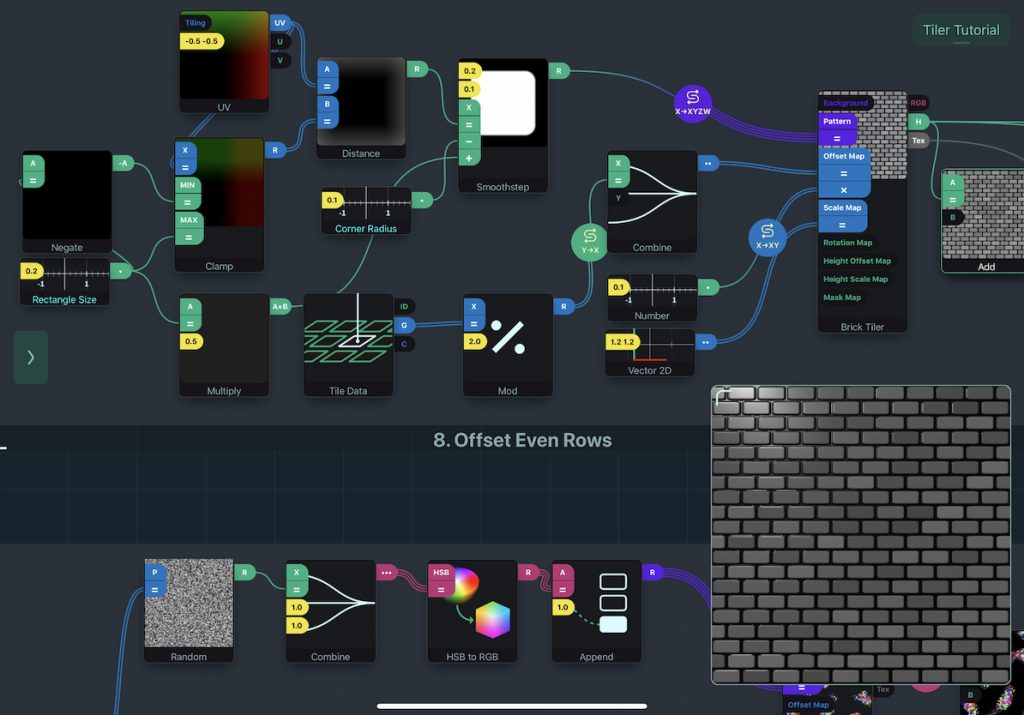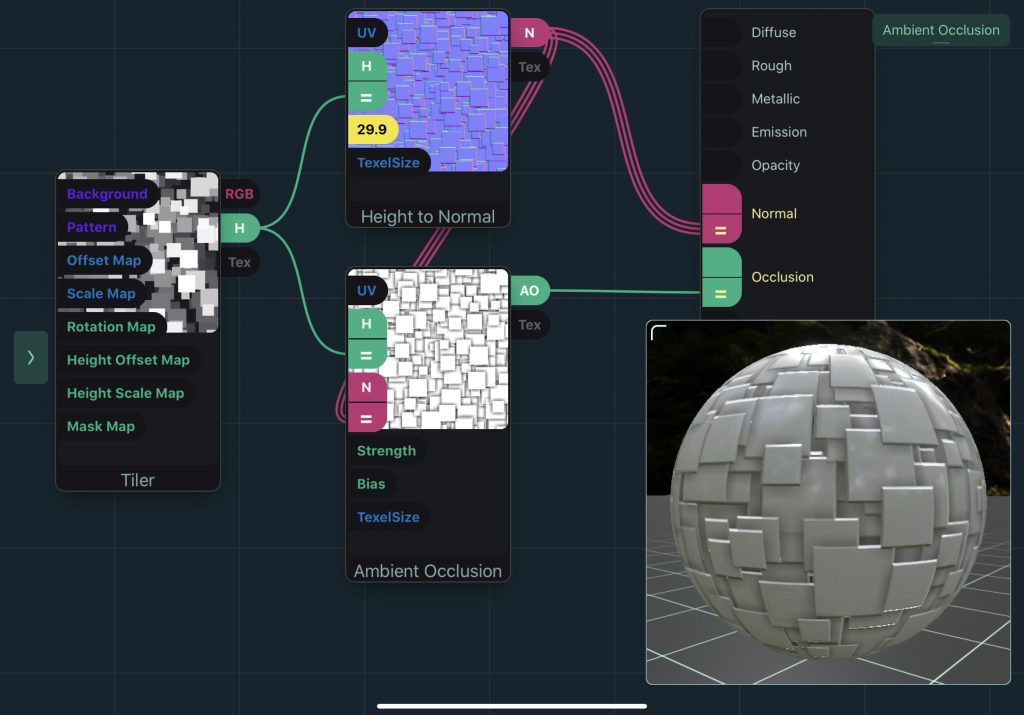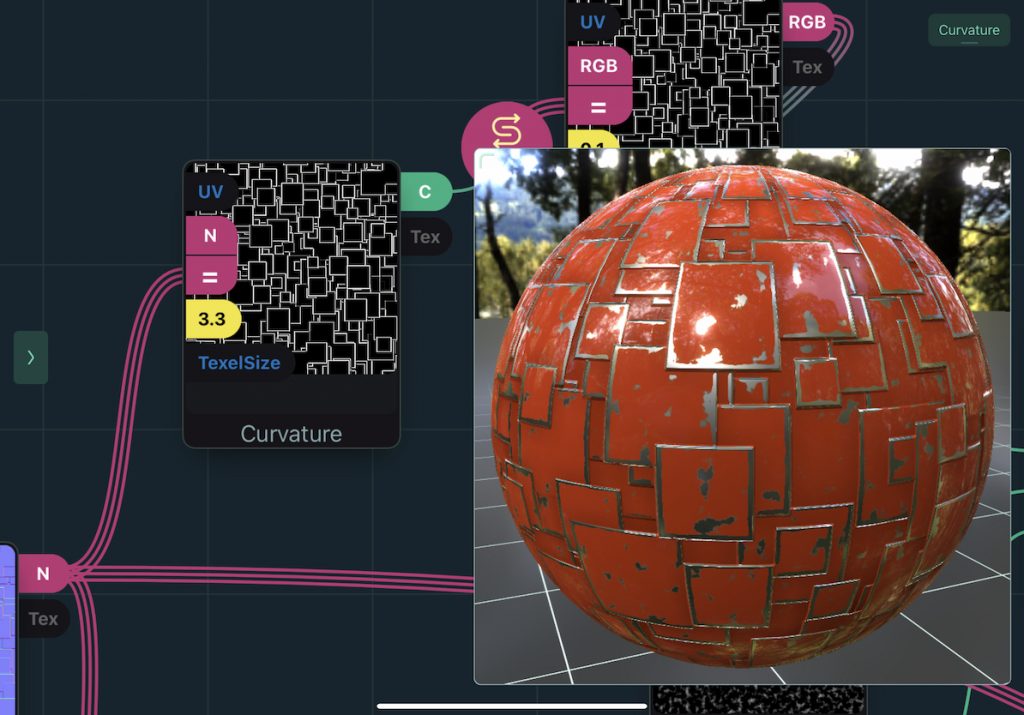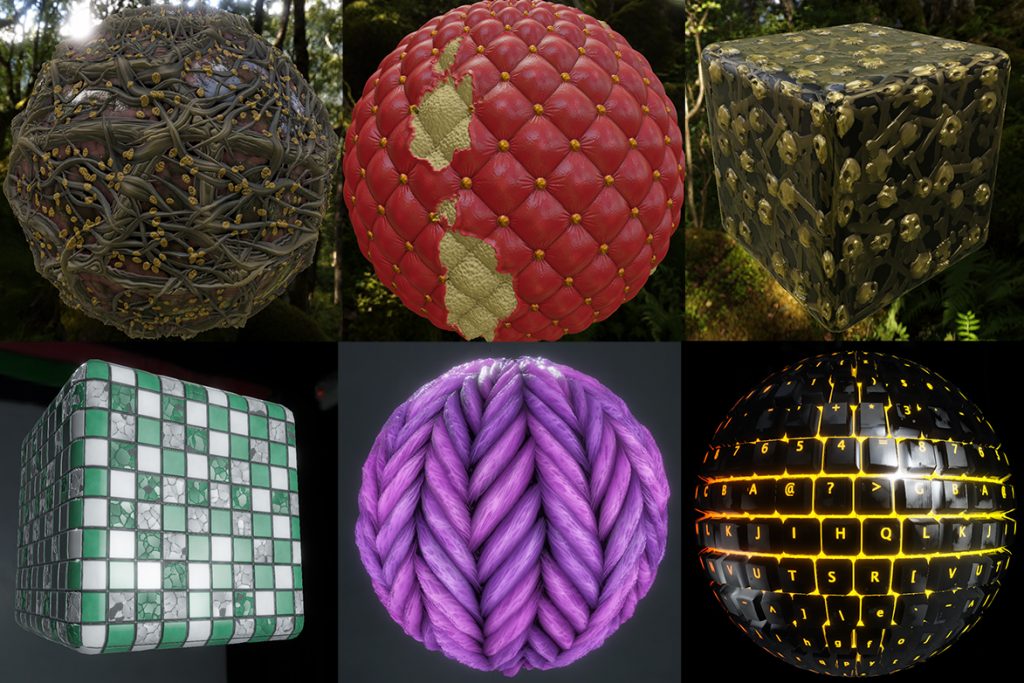The latest update to Shade is now out! These are the new features that make it easier to use and much more powerful
Export Plugins
The biggest new feature in this version of Shade is the Export Plugin system. By default, Shade allows you to export your shaders to Codea and Unity. Now you can write your own plugins for Shade to export to any platform or game engine you like
A plugin consists of a Lua script and template files which transform the graph data into one or more shader files to be used by the target platform
How do you add them? Just drop the plugin into Shade’s Documents/Library/Plugins folder
This feature is available in to Pro users only
You can check out https://github.com/JohnTM/Shade-Plugins for documentation and example exporters. In a future article I will do a deep dive into export plugins and show how you can write one yourself
Multi-Select
A fairly major limitation of Shade was the single-selection for node editing. Now by using a hold and drag gesture you can select multiple nodes. They can then be moved, deleted, copied, duplicated and grouped
New Context Menus
Grouping
Grouping nodes can now be done via the dropdown menu or ⌘-G if you have a keyboard. You can also recenter the graph to show all nodes at once
Duplicate and Copy/Paste
Sometimes you need to re-use a section of a graph or want to copy some boilerplate nodes between shaders. With multi-select and duplicate this is now easy
Single-tap Context
Tapping on a selected node will instantly bring up its context menu, and tapping the canvas without a selection will bring up the canvas context menu. Long press still works but this is a nice quick alternative for power users
System-wide Undo/Redo
The undo system has been rewritten from scratch to be much more reliable and also makes use of the iOS 13 system-wide undo gestures (triple finger tap or swipe)
New & Improved Preview Options
Fullscreen Mode
The preview panel can now be set to fullscreen mode, so you can see your shaders in glorious detail (really, they look amazing with the new HDR environments)
Environment
The Sunny and Night environment options have been removed to make way for Atmosphere, a physically based atmospheric sky dome. Sun angle, colour and intensity can also be controlled
Custom HDR backgrounds can also be used by placing a .hdr image in Shade’s Documents/Library/HDR folder to take advantage of Image Based Lighting (IBL)
Exposure options have been added to adjust both the environment brightness as well as an exposure-based tone mapping option to give more control over the look of previewed shaders (especially useful for beauty renders)
Custom Models
Custom models can be used in the preview viewport by placing them inside Shade’s Documents/Library/Models folder. Currently .fbx, .obj, .blend, and .stl formats are supported
New Nodes
Tiler & Tile Data

Inspired by the various tiling nodes in Substance Designer, the Tiler node is designed to make creating seamless tiled textures as simple as possible
The Tiler node takes in both height and colour information in the form of a background input (to blend on top of) and a pattern input to stamp in various places. The pattern itself is an expression, which can vary depending on where it is placed (via the Tile Data node)
There are built-in options to control the pattern placement, scale, rotation and random variations. Optional inputs allow you to vary each tile individually using nodes (scale, position, rotation, height and so on)
Tiler nodes can also be daisy chained together to layer various details together. A future post will deep dive into the Tiler node workflow
Ambient Occlusion

In the Physically Based Rendering (PBR) workflow, indirect lighting has become an important part of making surfaces look realistic and appealing. Shade can now generate AO maps directly from height and normal information using the Ambient Occlusion node
Curvature

The Curvature node is useful for mapping sharp convex and concave regions within a surface which can then be used for various weathering and roughness effects
Parallax Offset
Parallax Offset is useful for creating a simple parallax effect within a shader for things like holes, highlights and translucent crystalline materials
New Workflow
With the addition of the Tiler, Ambient Occlusion and Curvature nodes, it is now much easier to create PBR-style texture maps for use with game engines, rather than just Shaders. The .shader bundle format that Shade uses contains all exported maps in png format, which can then be used in whatever engine you wish (via iCloud, zip export, Unity export, and so on)
Below are some examples of materials created with the new nodes

New Image Formats
Initially Shade only supported 8-bit RGBA images for all baked textures. Now there is support for RGBA, Grayscale and RGB textures with both 8-bit and 16-bit precision. This allows for better use of available GPU resources and more detailed height maps for normal, curvature and AO generation
Bug Fixes, Stability & Performance Improvements
With this release many bugs have been found and squashed, various problems with the graph system have been reworked, and some performance issues have been identified and fixed. Obviously there are going to still be some issues, but we’re going to fix those as well
Future Updates & Roadmap
Shade 1.1 represents a considerable jump over 1.0.1, but there’s more to come. Here are some of our plans for the future of Shade
Short Term
More Sensor Nodes
We have a microphone node but want to add some more ways for you to get your device’s sensor data into your nodes
- Camera (front and back)
- TrueDepth Camera (depth sensor)
- Accelerometer
- Gyroscope
- Magnetometer
- GPS
In-Editor Export Option
The ability to export directly from the shader graph editor, rather than needing to leave first
Map Exporter
The ability to tag baked images (albedo, height, etc) for quick export to third-party engines
Screenshot Export
Export a full sized screenshot of the entire node graph
Mid to Long Term
Graph Annotations
Make use of Apple Pencil so you can fully annotate the canvas to leave freeform comments
Custom Lighting Input
A new Surface Node input allowing for customised lighting equations
Function Graphs & Sub-Graphs
The ability to create and edit sub-graphs that appear as a single node. These would allow for more reusability and sharing within the community
Custom Node Plugins
Fully custom user nodes written in Lua
Graph to Graph Import & Export
An interface within the Export Plugins system to facilitate graph to graph export and import (i.e. Unreal/Unity shader/material graph interoperability)
Switching from Open GL ES to Metal
Shade is built on top of Codea, our iOS-based coding app. We plan to move both these apps to a new Metal-based runtime engine
We’ll see performance benefits, proper support for volume textures, compute shaders, new image filters such as flood fill and connected components. As well as potential support for hardware tessellation in the preview viewport